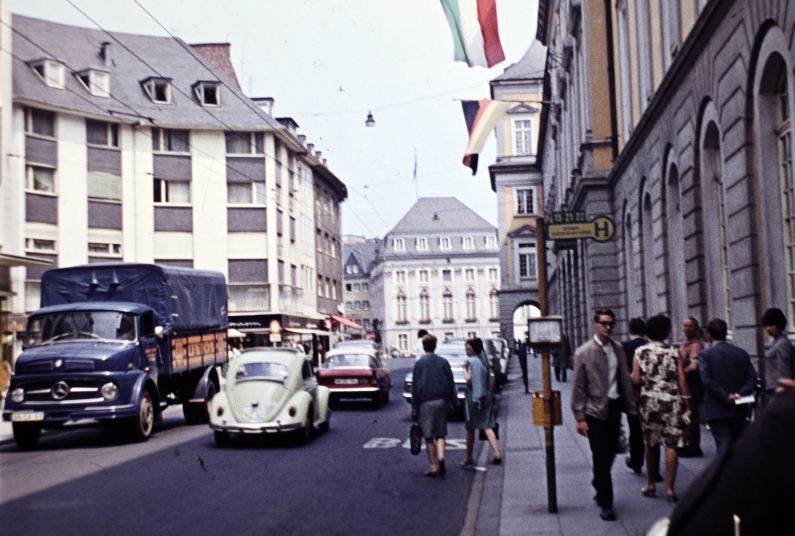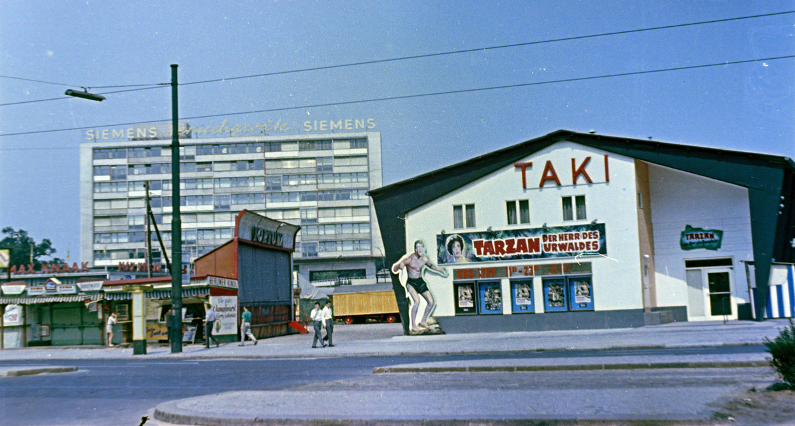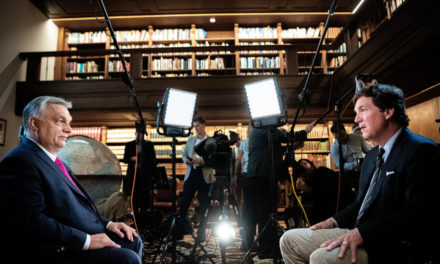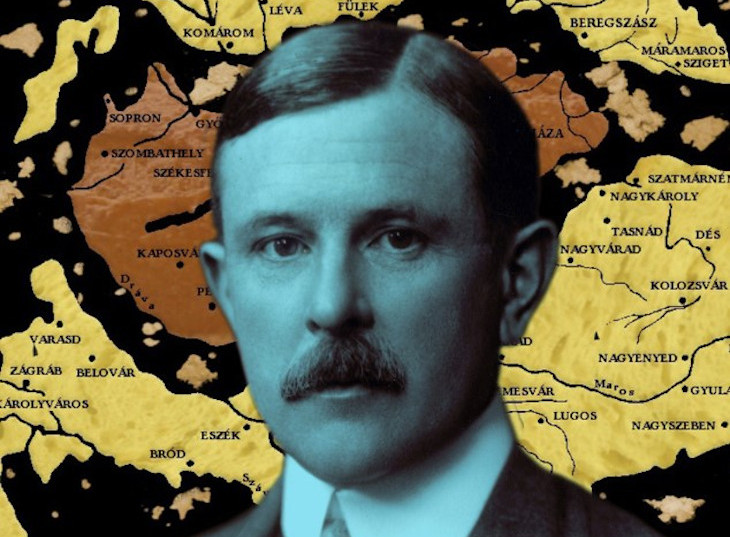The historian Zsuzsanna Borvendég's series was originally published on the PestiSrácok website, but there are certainly those who missed it. But those who haven't read all the parts should also read it again. Knowing the whole picture, can we understand how we got here?
Some companies were willing to pay huge bribes in order to enter the blocked and starved Hungarian markets: while the Iron Curtain closed us off from the open air of the West, it protected the capitalist companies entering here from competitors. Think about it: here they didn't have to compete for customers in free market conditions, just as they didn't have to undertake any special quality guarantees, and moreover, equipment and outdated technologies that were already condemned to scrapping in the West found owners for good money.
The Cold War was primarily about technological competition: both superpowers knew that the winner would be the one who had enough intellectual and material capital to develop the most modern weapons. In the beginning, the result was dubious, since America was shocked by the Soviet space program, but the inequality of economic resources – obviously partly also due to the unviability of the communist system with planning instructions – led to an unattainable advantage for the United States in the longer term.
The fight intensified and – quoting the words of Comrade Virág – the situation escalated, so the transfer of technology enjoyed first priority among the Soviet strategic goals. Research centers and industrial companies became Cold War front lines, where spies and interceptors fought their battles. Big Brother also expected embargoed purchases from Hungary, one of the key facilitators of which was the National Technical Development Committee (OMFB).
János Sebestyén came back to Hungary after his two-and-a-half-year assignment in Frankfurt to participate in the organization of a particularly important and powerful institution. The time spent in FRG was more than enough to set the operation of the commercial office on a new track, i.e. to increase the military reconnaissance, MNVK-2. influence, as well as to establish excellent relations with West German industrial concerns.
After Sebestyén returned home, he became the head of the Technical Secretariat of the National Planning Office, from where he coordinated and organized the establishment of the OMFB. The tasks of the committee included the development of the country's economic development program, the coordination of research and, of course, the acquisition of advanced technologies. The OMFB was one of the most important clients of technical-scientific intelligence , as they knew the need of industrial companies and various institutes to import the tools and know-how necessary for development, which the committee forwarded to the secret service.
But he was not only involved in the procurement of embargoed technologies as a customer, since in many cases he himself had direct access to prohibited equipment, blueprints, technical descriptions, etc. with his extensive network of contacts. The OMFB was a quasi-cover organization for intelligence.
Sebestyén already collected important information during his assignment in Germany. According to his colleagues in Frankfurt, he negotiated with German companies with extremely good results, generally managing to obtain all the technical documentation he deemed important. For example, he was also credited with obtaining the silicon rectifier technology, which was considered among the most severely embargoed products. But the importance of his network of contacts, from his own point of view, did not lie in the possibility of circumventing the COCOM list, but in the conclusion of business cooperations. Some companies were willing to pay huge bribes in order to enter the blocked and starved Hungarian markets: while the Iron Curtain closed us off from the open air of the West, it protected the capitalist companies entering here from competitors. Think about it: here they didn't have to compete for customers in free market conditions, just as they didn't have to undertake any special quality guarantees, and moreover, equipment and outdated technologies that were already condemned to scrapping in the West found owners for good money.

János Sebestyén (image source: ABTL)
They could expand almost without the slightest risk in a market that was protected against unwanted "invaders" by the armed forces of a total state. No wonder they willingly paid bribes to those who made all this possible for them . At that time, the big multinational companies started the "modern colonialism" in our country, - the orthodox Marxist ideologues were certainly right about this.
Sebestyén and his colleagues "created a foundation through their contacts during their stay in Frankfurt to ensure the entry and further strengthening of various West German capital companies into the Hungarian market in the future." – we can read the findings of the counterintelligence of the time. The OMFB had a significant budget, which was increased every year. By 1973, they were managing with an annual budget of HUF 300 million and USD 5 million, which offered a wide opportunity to choose commercial partners and purchase the required technologies.
West German companies preferred
It did not escape the attention of the state security that certain partners were favored during industrial cooperations and commercial deals: "After the West German companies with which they had been in contact since Frankfurt continuously applied, efforts were made under the leadership of Sebestyén to primarily support the offers of these companies , especially in the case of identical technical and economic conditions."
During his tenure - until his retirement in 1988, he was the deputy president of the OMFB - he invested a lot of energy in increasing the import of West German industrial products. According to the report, "despite the fact that he has avoided the field of foreign trade, he is very actively involved in various foreign trade negotiations, regularly traveling to Western states, where he independently makes agreements on business deals. Sebestyén keeps in touch with several senior foreign trade and industrial persons. Through these relationships, he validates his foreign trade-related ideas."
The ex-Nazi Hoffmann received an "ear" many times
Of course, all of this was part of Sebestyén's remit, since the easiest way to get hold of embargoed products was by covering commercial contracts.
Most of the Western companies were also open to circumventing the ban enforced by the US authorities, especially since the COCOM list increased prices, meaning that the same product could probably be sold more expensively in the Eastern Bloc than in the free world. However, Sebestyén did not leave the competition of offers to chance. He divulged information in an informal way, with which he gave the pre-selected partner an advantage.
Even during his assignment in Frankfurt, he entered into a relationship of trust with the management of Siemens, whose market acquisition in Hungary he facilitated for years. In the first years Emil Hoffmann , whose Nazi past and Cold War secret service adventures were read a lot in the earlier parts of this series. Hoffmann also received sensitive economic information from the OMFB about the countries of the KGST, with which he then "traded" on the spies' battlefield. The KGST data released by Hoffmann presumably played an important role in promoting the countries of the Eastern Bloc to Western companies , but the part of the manipulative leaks that affected the competition of industrial companies was certainly accompanied by financial damage.

The coveted West - Bonn 1968 (photo: ÁBTL)
It is no coincidence that the officers of the political police watched Sebestyén's circles with increasing suspicion, but they still could not touch the powerful engineer, even though they did everything in order to sideline the deputy president of the OMFB. At this point, we may rightly ask the question of when the terrorist organization of the party state became the steadfast guardian of law and decency, but presumably that was not the case.
Sebestyén helped the people of MNVK-2
Sebestyén held too high a position for any secret service to have used him as a member of an organized operational network, but we know for sure that in Frankfurt he did a serious service to MNVK-2 by employing his winners (that is, his organized "agents") in the branch office. From this, it can be strongly suspected that he may have been more committed to military reconnaissance than to the Head of the Main Group of State Security of the BM.
There was some kind of rivalry between the two organizations, and it can also be read from the documents that the BM's counterintelligence did its best to make impossible the corruption network that began to develop in connection with military intelligence from the 1960s. In fact, it was in connection with Hoffmann's observation that they reached Sebestyén's circles and the suspicious business policy of the OMFB, but here they ran into walls.
They achieved so much that the ex-Nazi journalist-businessman was banned from the country in the mid-sixties, but they did not reach the committee's leadership. Until the mid-seventies, they tried to gather incriminating data about Sebestyén's suspected corruption-related businesses, but in the end only two of his direct colleagues were convicted. (I will write about them in a later section.)
The fight between AEG and Siemens
So Sebestyén could continue his seemingly dubious business policy under the protection of the party state. Its most important partner was Siemens. He exerted strong pressure on foreign trade companies to buy Siemens products, and put the German company's competitors, such as AEG, which also intends to open up to eastern markets, into a disadvantageous position by leaking information considered business secrets, which he used to manipulate price negotiations .

Siemens West Berlin (photo: Fortepan)
In 1961, even before the official establishment of the OMFB, the company manager of AEG, Klaus Lieske , publicly stated that their offer was much more favorable than the one that was finally concluded with Siemens by one of the Hungarian industrial companies, so next time they will do everything to overthrow János Sebestyén - who, according to them, was behind the manipulations - by offering even greater discounts to the Hungarian partner. Be that as it may, they did not achieve a breakthrough result, they could not significantly reduce the monopoly of Siemens.
Two years later, we can already read in a report that the representatives of AEG also managed to find an insider who shared with them some information considered a trade secret, so they learned that their offer was already cheaper than that of Siemens, so they were not willing to offer further discounts to offer to the Hungarian side, and they were even faced with the fact that in some cases much stricter conditions were imposed on them than what they expected from the competitor. The fight for Siemens' market acquisition caused serious storms in the party and government leadership.
Source: PestiSrácok
Author: historian Zsuzsanna Borvendég
(Header image: ÁBTL)













